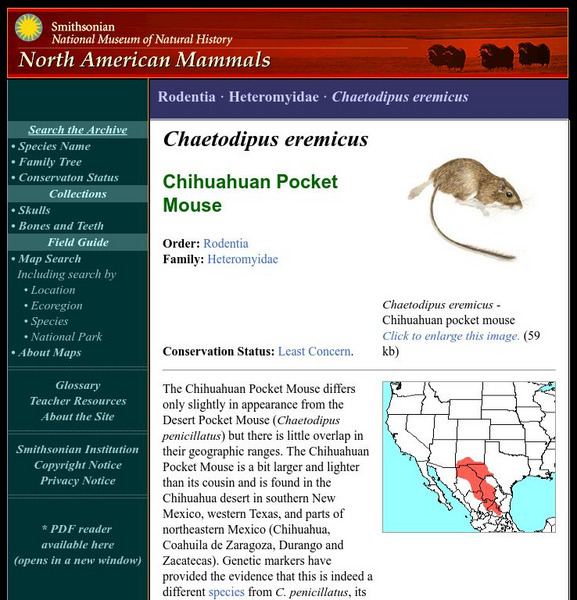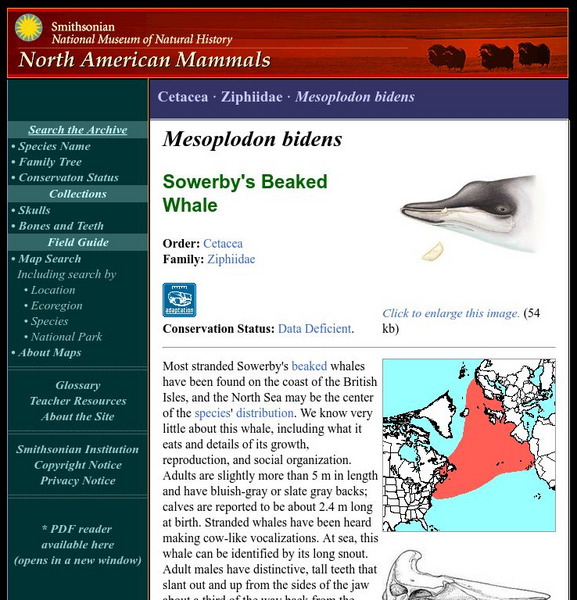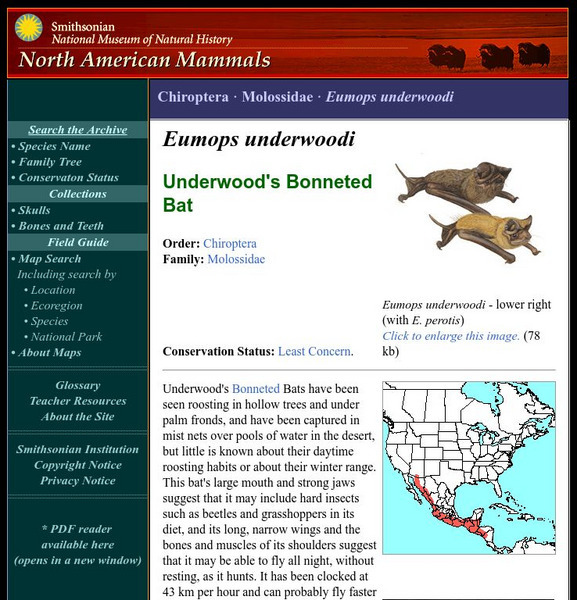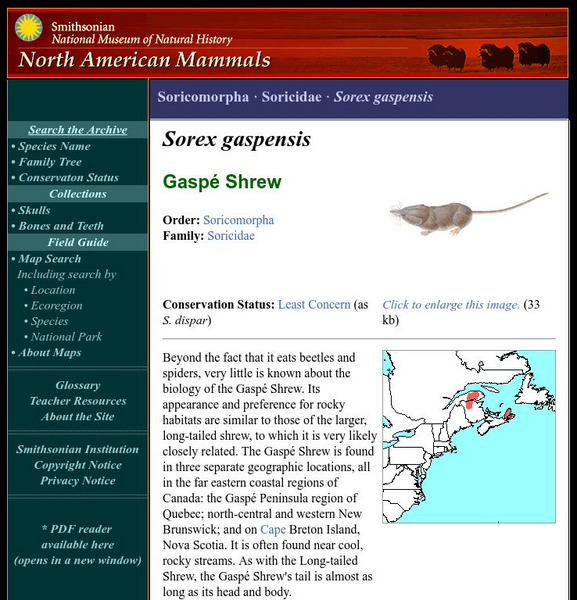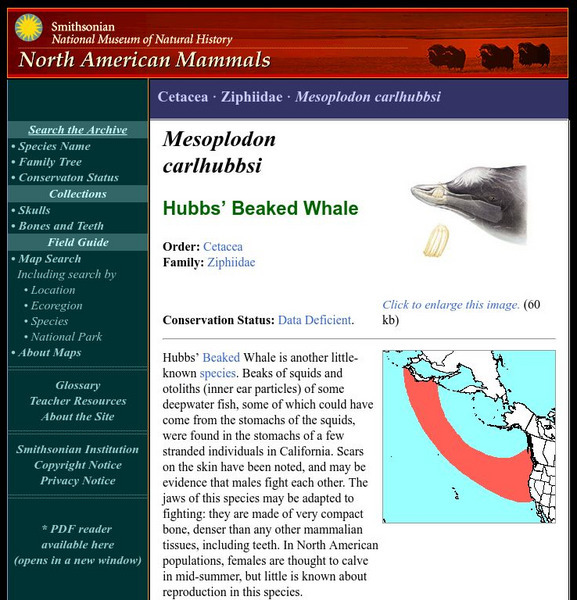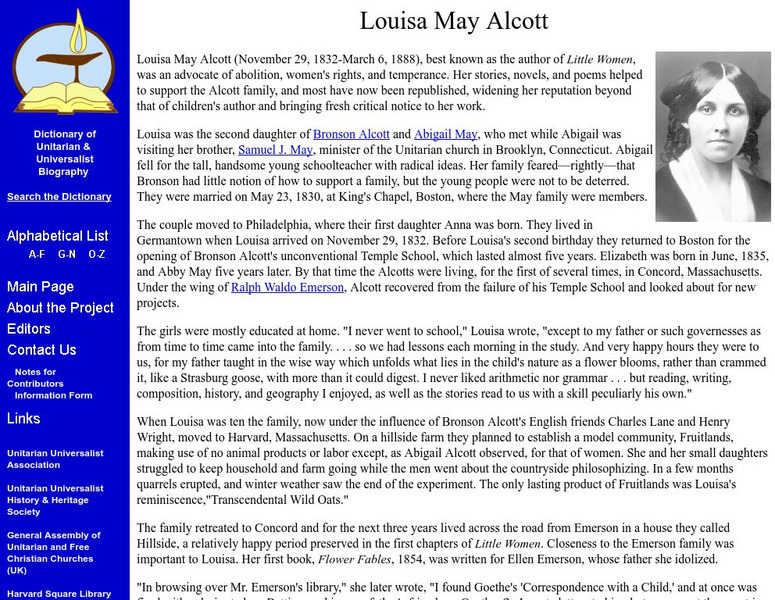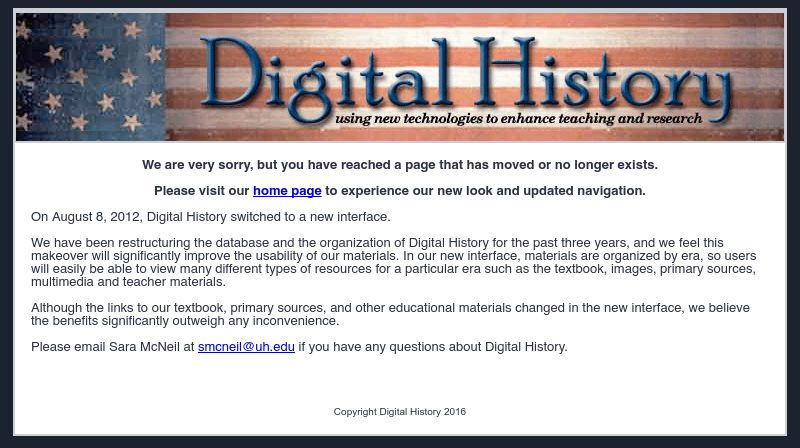Curated OER
Educational Technology Clearinghouse: Maps Etc: South American Rainfall, 1901
A map from 1901 showing mean annual rainfall in South America. The map shows the equatorial rain belt in July and in January, the direction of prevailing winds and their effect on rainfall patterns. The map shows regions ranging from...
Curated OER
Educational Technology Clearinghouse: Maps Etc: South American Heat Belts, 1901
A map from 1901 of the Heat Belts in South America showing the Heat Equator in July, regions where it is always hot, regions of temperate winters and hot summers, and regions where it is always temperate. "There is comparatively little...
Smithsonian Institution
National Museum of Natural History: American Mammals: Chihuahuan Pocket Mouse
The Chihuahuan Pocket Mouse differs only slightly in appearance from the Desert Pocket Mouse (Chaetodipus penicillatus) but there is little overlap in their geographic ranges. The Chihuahuan Pocket Mouse is a bit larger and lighter than...
Smithsonian Institution
National Museum of Natural History: American Mammals: Alaskan Hare
Female Alaskan Hares nurse their young for an extended period, providing them with enough nutrition to grow extraordinarily quickly during the short Alaskan summer. There is an average of six furry little hares in a litter, and females...
Smithsonian Institution
National Museum of Natural History: American Mammals: Sowerby's Beaked Whale
Most stranded Sowerby's beaked whales have been found on the coast of the British Isles, and the North Sea may be the center of the species' distribution. We know very little about this whale, including what it eats and details of its...
Smithsonian Institution
National Museum of Natural History: American Mammals: Yuma Myotis
The skull and jaws of the Yuma myotis suggest a dependence on relatively soft insects, and the little dietary information available supports this. It fits well with the bat's habit of foraging over water, where moths and other...
Smithsonian Institution
National Museum of Natural History: American Mammals: Preble's Shrew
Very little is known about the natural history of Preble's Shrew, which has been found in widely separate localities in much of the western United States. Specimens have been collected at elevations of 1,280 m in Oregon and 2,750 m in...
Smithsonian Institution
National Museum of Natural History: American Mammals: Western Red Backed Vole
The Western Red-backed Vole lives in conifer forests from the Columbia River south through western Oregon to northern California. Its population densities are greatest in dense, dark forests where there is little or no understory. Learn...
Smithsonian Institution
National Museum of Natural History: American Mammals: Underwood's Mastiff Bat
Underwood's mastiff bats have been seen roosting in hollow trees and under palm fronds, and have been captured in mist nets over pools of water in the desert, but little is known about their daytime roosting habits or about their winter...
Smithsonian Institution
National Museum of Natural History: American Mammals: Gaspae' Shrew
Beyond the fact that it eats beetles and spiders, very little is known about the biology of the Gaspe Shrew. Its appearance and preference for rocky habitats are similar to those of the larger, long-tailed shrew, to which it is very...
Smithsonian Institution
National Museum of Natural History: American Mammals: Hubbs's Beaked Whale
Hubbs's beaked whale is another little-known species. Beaks of squids and otoliths (inner ear particles) of some deepwater fish, some of which could have come from the stomachs of the squids, were found in the stomachs of a few stranded...
Other
Uua: Louisa May Alcott
Detailed biography of Louisa May Alcott (1832-1888 CE) from the Dictionary of Unitarian & Universalist Biography. Contains a couple of pictures as well.
National Endowment for the Humanities
Neh: Edsit Ement: Civil Rights Movement
This lesson on the Civil Rights movement is organized into three sections: "Identifying the Need for Change," "Ordinary People in the Civil Rights Movement," and "Historic Places in the Civil Rights Movement."
PBS
Pbs Learning Media: Sitting Bull: Spiritual Leader and Military Leader
Through two primary source activities and a short biographical video, students will understand the remarkable courage of this leader who stood up for his people.
Scholastic
Scholastic: Integrating Central High Melba Pattillo Story
This is the story of Melba Pattillo, one of the nine African American students who were the first to enter Central High School in Little Rock, Arkansas. Her story is very informative, and the site ends with a reflection question of how...
Library of Congress
Loc: Our Place in the Politics of the Country
Although the 15th amendment gave the freedom to vote to African Americans, little was done to enforce it. 90% of African-Americans living in the South were not able to vote, and in the North where voting was easier, the African American...
Scholastic
Scholastic: New York Times Upfront: The Civil War: Ten Things You Should Know
Article written on the 150th anniversary of Fort Sumter, the beginning of the American Civil War, in which the author presents little known Civil War facts about topics such as, Americans during that time, slavery, new technologies,...
Blackdog Media
Classic Reader: Authors: Washington Irving
This site features the author Washington Irving including a biography and the full text of the novel Old Christmas and three short stories: "The Legend of Sleepy Hollow", "Little Britain", and "Rip Van Winkle".
Georgia Humanities Council and the University of Georgia Press.
New Georgia Encyclopedia: Blues Music: Overview
Overview and definition of blues music that developed in the southern United States in the early nineteenth century. Performers from Georgia include Ray Charles, Ma Rainey, Little Richard, and the Allman Brothers.
Library of Congress
Loc: America's Memory: Montana
Who were the first white explorers to "set foot in Montana?" Find out more about the Native American population living in Montana. Draw on the experience of the Native American population.
Countries and Their Cultures
Countries and Their Cultures: Seneca
Learn more a little about the Seneca tribe which is an original member of the League of the Iroquois. The article discusses where they live and a little bit about their life.
Oklahoma State University
Chronicles of Oklahoma: A History of the Quapaw [Pdf]
A historical description of a little known Native American tribe of the southeast United States, the Quapaw, who had contact with DeSoto.
Digital History
Digital History: Years of Crisis
It's not surprising the United States would have challenges in its first years. Read about the problems with foreign countries, its own citizens who resisted taxes, and dealings with Native Americans.
PBS
Pbs: Lewis and Clark: Wishram Indians
A look at a little-known tribe, the Wishram Indians, encountered by the Corps of Discovery on their return trip up the Columbia River. Read about the importance of trade networks to the Indians. From PBS.



